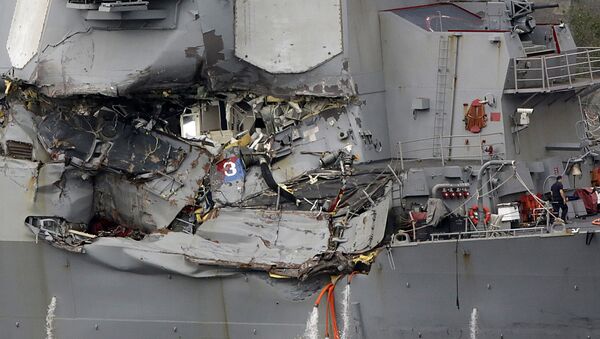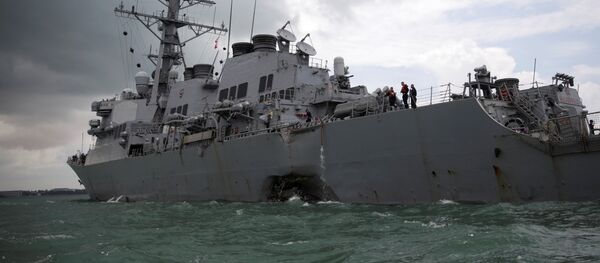Although the measure is helpful, it will not be able to eliminate the problem completely.
Last month, 10 US soldiers were killed after the Navy's USS John S. McCain crashed into Liberian-flagged chemical tanker Alnic MC east of Singapore. In June, the USS Fitzgerald collided with a Philippine cargo ship off the coast of Japan, killing seven soldiers. Following the deadly collisions, US Naval authorities have been considering measures to prevent similar incidents in the future.
The decision to require all US Navy warships to activate their Automatic Identification System (AIS) when sailing in high ship traffic areas, such as the South China Sea or off the coast of Japan, should help other ships recognize when an American naval vessel is in their vicinity.
AIS sends a ship's location, speed and navigational status via VHF maritime transmitter every two to 10 seconds. Broadcasting these details will help avoid collisions, especially taking into account that the Arleigh Burke-class of destroyers were designed with reduced radar signatures, making them appear smaller on nearby radars. The info also aids in search and rescue operations and helps investigate incidents. US Navy vessels are outfitted with AIS but until now they were not required to use it.
First, transmitting the identity of Navy ships could make them more vulnerable to attack. Also, the location information only flows one way: AIS will not help those onboard the destroyers see the merchant ships.
Investigations are still underway into why the fatal incidents took place despite the destroyers' better radars and the requirement to have watchstanders scanning the nearby seas for potential dangers at all times.



